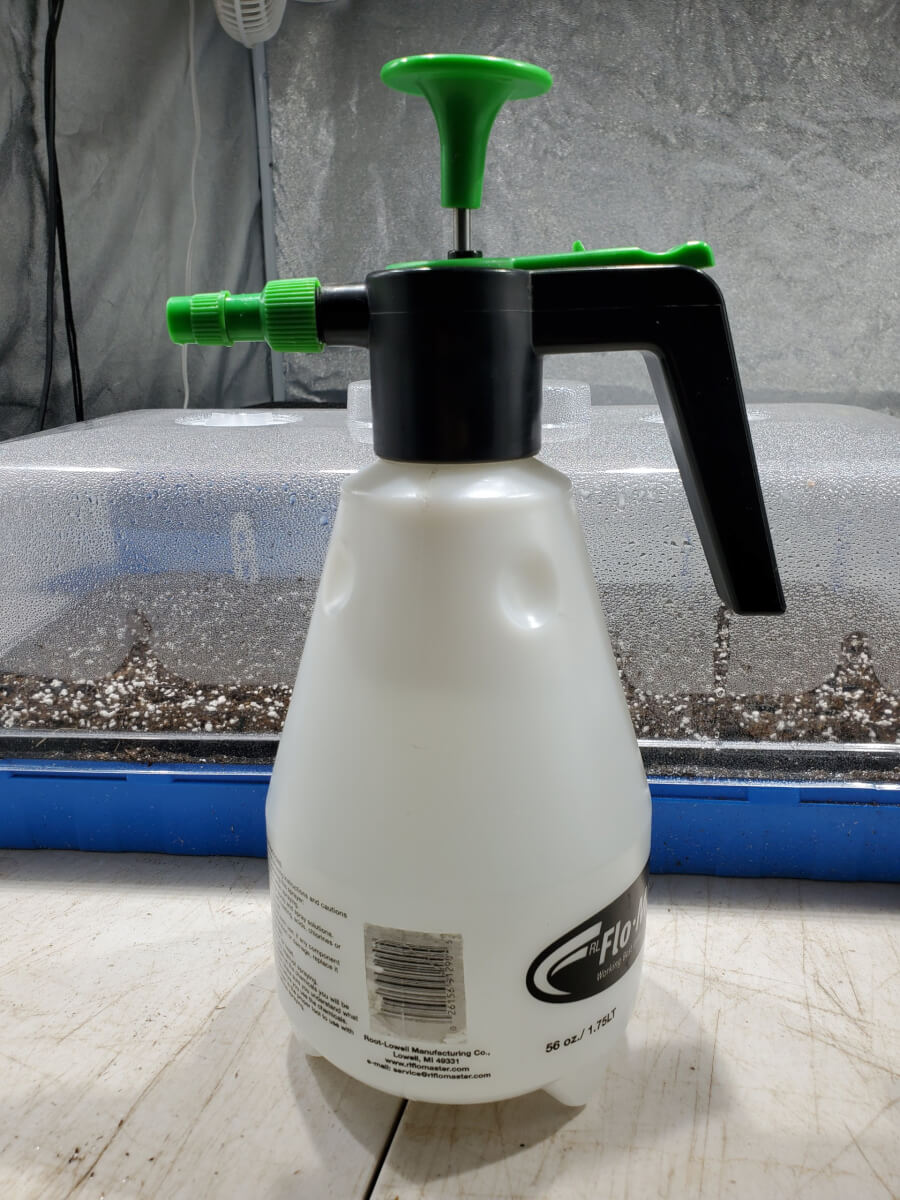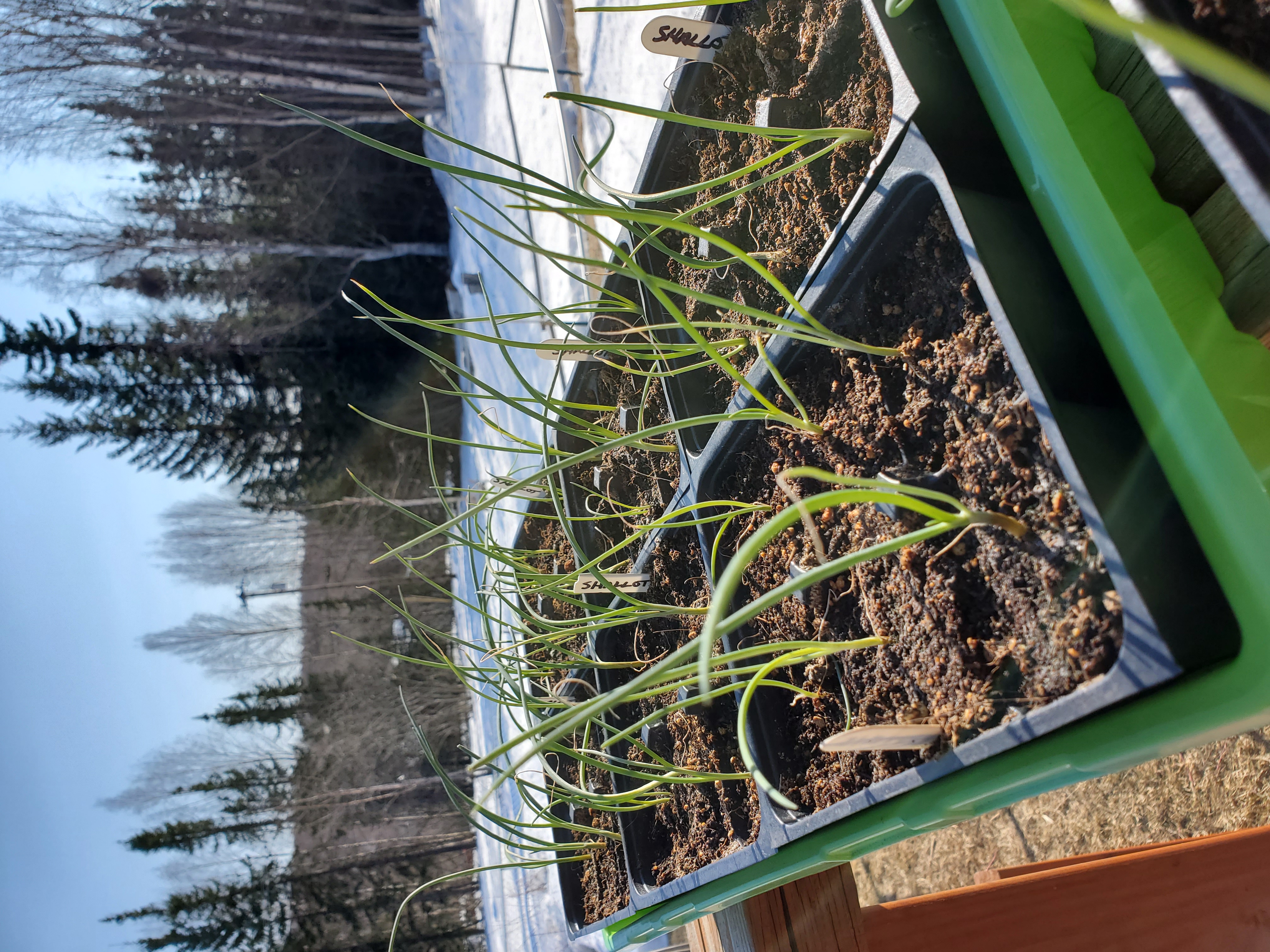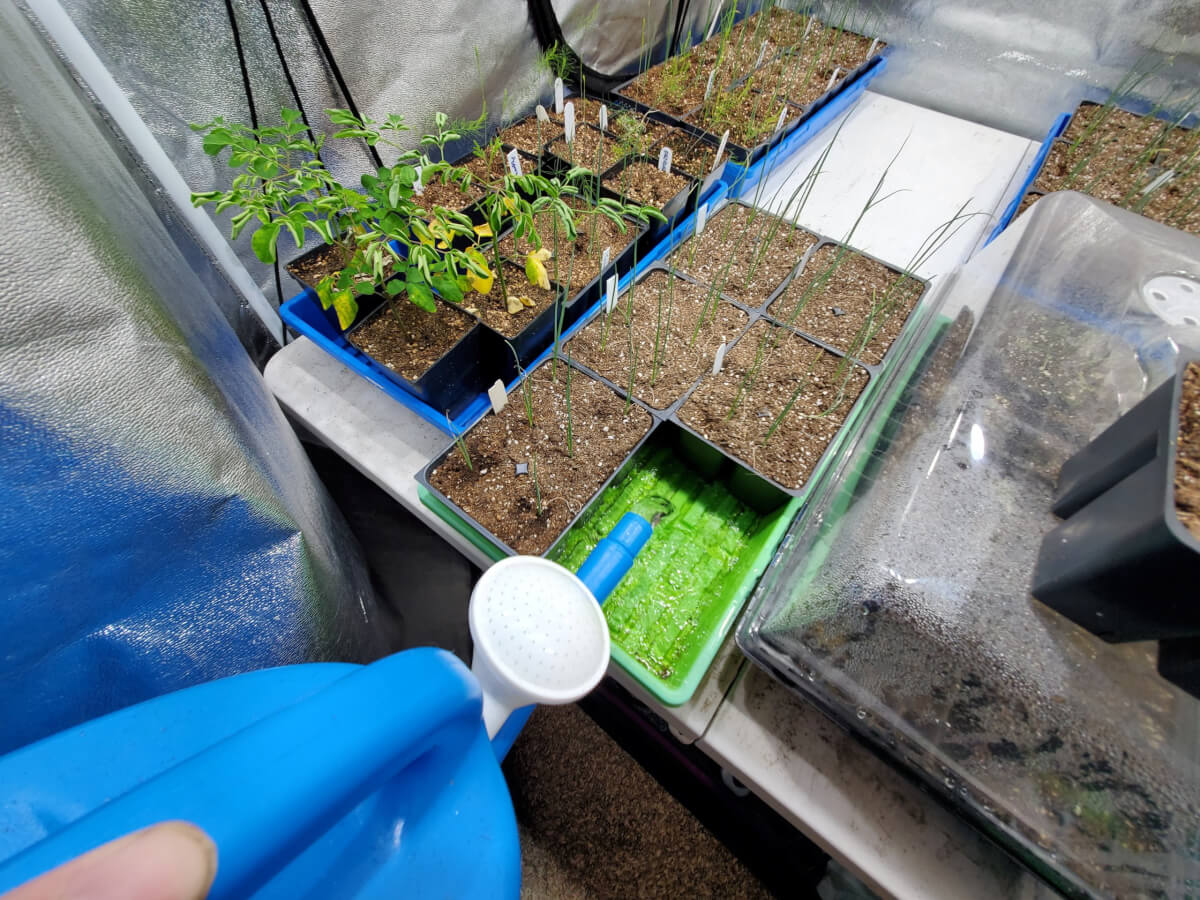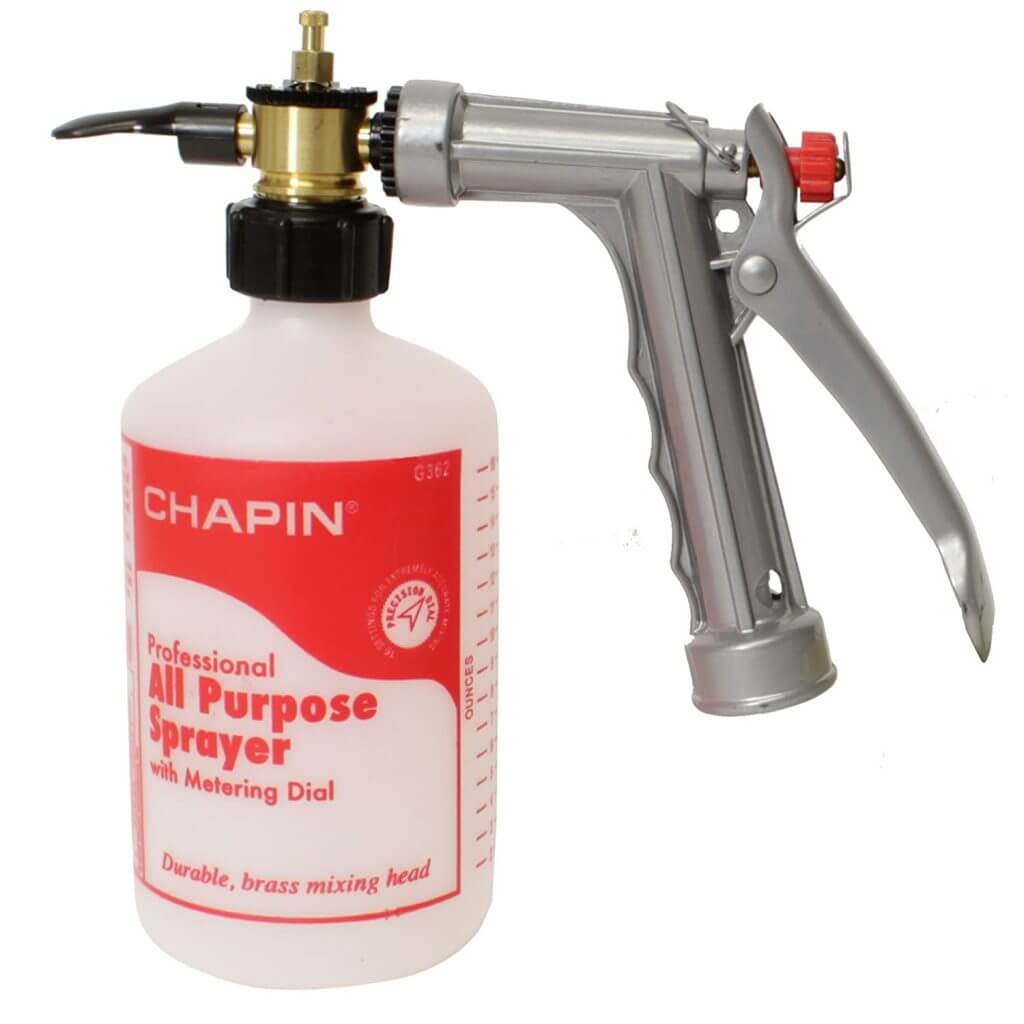It’s no secret that plants need water! This is the most frequent interaction you will have with your plants, especially when growing from seed indoors!
While this is a very simple topic, it still is probably important to discuss for those new gardeners.
Over the years, we have toyed around with various methods of watering our plants. It’s these simple, but truly small changes that enhance our gardening quality of life.
In this post, we’ll share some of the primary techniques that we use to keep our indoor garden fully hydrated!
Watering Your Baby Seedlings
In the early stages of plant development, your seedlings are very fragile. Simply dumping a bunch of water on your plants is a sure-fire way to harm them.
For a long time, we used a typical water bottle sprayer to mist and water our seedlings. We have done this for years and it’s a very effective method.

You don’t really need a super fine mist-like spray. The technique just needs to be gentle enough not to knock over newly born seedlings.
The problem is, this spray bottle effort gets really tiring after a while.
Often times you’re also going through 2-3 fill ups per watering cycle and afterwards, your hands hurt from the effort.
It’s a fast track to carpal tunnel syndrome.
Evolving The Method Of Watering Your Seedlings
In our efforts to come up with a “better way” to water our seedlings, we found the absolute perfect thing.
Introducing our new pressure sprayer! The great news is that it costs a whopping $6.97 at the local Home Depot.

This thing holds just shy of a half gallon of water, which is definitely a bit more than the average sprayer holds.
It is activated by a plunger that builds pressure within the canister. This pressure can then be released by a trigger, allowing water to be drawn up and sprayed through the nozzle.
You may have used one of these before for applying pesticides or perhaps other liquid applications. The main difference with this one is that it’s hand held and easy to maneuver around your seedlings.
This thing is awesome. It can be adjusted to produce a very fine mist, a spray-bottle like spray or a jet of water. Obviously the latter setting is a plant killer, so we choose the fine mist spray.
Overall, it requires very little pumping to release the entire 56 ounces of water in the container.
This tool has become indispensable for our indoor gardens. We could never imagine going back to the original spray bottle method!
The Real Watering Problems Start Once Your Plants Get Larger
While the above methods are great for seedlings, there comes a point where the simple spray bottle method just isn’t enough.
When you transplant your babies into a larger container, all of a sudden your watering needs also increase.
The next most logical step is to use a watering can.
If you’ve ever used a watering can, you know it’s not the best tool for controlling the water and being gentle on your small plants.
Even as plants get a bit older, their roots still aren’t well developed enough to keep a deluge of water from uprooting them.

This can be rather disruptive to your early garden, simply because they aren’t yet super well rooted.
Plus, a deluge of water can get dirt everywhere in your indoor garden.
We solved that problem too!
Use Bottom Watering Techniques To Water Your Plants!
As we mentioned elsewhere, we have based our entire indoor garden around 1020 trays and various inserts or pots that interoperate with the 1020 system.
One of the great things about these trays is you can simply add water to the tray itself to water your seedlings!

The soil comes into contact with this water and it will naturally wick it throughout the rest of the soil. This helps to fully saturate your soil with water.
This is a form of sub irrigation, which goes all the way back to the Hanging Gardens of Babylon!
We particularly like a few things about this particular technique:
- It is very gentle on the plant’s roots, at no time are they disrupted
- We can water all the seedlings in the tray in one fell swoop, as opposed to multiple passes
- If we over-water, we can simply remove the water from the tray
- When our plants become really thirsty, we can intentionally over-water.
During our indoor garden phase, this is the primary way in which we infuse water into our seedlings’ soil.
Perhaps obviously, when using this method, it’s important to utilize 1020 trays that don’t have holes in them. Some do have holes, so if you want to use this method, be sure to order those without them!
Fertilizing Larger Sized Gardens
We don’t think it’s necessary to discuss watering larger gardens. Just grab your hose, slap on a sprayer or other water diffuser and go to town. It’s not rocket science.
When it comes to fertilizer, though, we do have some comments worth sharing.
Over the years, we have gravitated more towards water soluble fertilizers, or fertilizers that can be dissolved in water and applied to the garden.
The motivating factor for this pursuit is easier application to our somewhat larger gardens.
We use what is called a “hose end sprayer” which allows relatively precise water soluble fertilizer applications with a hose. These devices will combine water and your fertilizer consistently.

The exact proportions you use with this tool will vary depending on the exact hose end sprayer as well as the specific fertilizer you might be using. Most of these units (and sometimes fertilizers themselves) provide guidance on the ratios to use.
We find this tool to provide a much faster experience when it comes to fertilizing our larger gardens. While it does result in some waste, since you’re often not targeting individual plants, we haven’t found this waste financially burdensome. (Mostly because we use inexpensive fertilizer.)
Be Careful With Over Watering Your Plants
Many new gardeners sometimes experience issues with overwatering their plants. It does take a bit of experience to figure out what is “just right.”
Despite water being essential for a plant’s growth, too much water can be harmful to your plants.
To help illustrate the goal, think of the two words “moist” and “wet” for a moment. In general, you’re looking for something more like “moist” when it comes to watering your plants.
As your plants mature, it’s not uncommon to have some of your plants absorb more water than others. When your plants are together, such as in a 1020 tray, this can present watering imbalance problems.
We sometimes remove certain plants that clearly have enough water infused into the soil, when others do need watering. Other times, we try to put similarly “thirsty” plants together in the same 1020 tray, which helps this balance a bit.
This balance does eventually become second nature to most gardeners. Just learn to trust what you see in your soil. Wet looks wet, moist looks moist and dry looks dry.
Simplifying The Watering Process Reduces Effort & Increases Quality
Again, we know this is a very simple topic. But, also one that every gardener will encounter.
We hope these small quality of life enhancements will prove as significant for your garden as they did ours.
Do you do something completely different? Have an even better method you’d like to share? Be sure to slap a comment down below!
That’s All We Wrote!

Having a good time? We have an ever growing list of insightful and helpful subarctic & cold climate gardening articles, waiting out there for you!
- Cold Climate Gardening Basics 👉
- Growing Your Garden From Seed Indoors 👉
- Advanced Cold Climate Gardening Techniques 👉
- Plant Specific Cold Climate Growing Guides 👉
- Subarctic Perennial Food Forests & Foraging 👉
- Indoor Garden Lighting & Grow Rooms 👉
- Greenhouses & Temperature Control 👉
- Harvesting & Food Preservation 👉
- Solving Cold Climate Garden Problems 👉
- 1 Minute Reads On Tons Of Garden Topics 👉
FrostyGarden.com is 100% ad-free and we do not use affiliate links! This resource is voluntarily supported by our readers. (Like YOU!) If we provided you value, would you consider supporting us?

Nice and very informative. Thanks.
Glad you found it helpful! Thanks for the kind comment.